
Here you will learn about frequency tables, including what a frequency table is and how to make a frequency table. You will also look at how they can be used to help analyze a set of data.
Students will first learn about frequency tables as a part of measurement and data in
2 nd, 3 rd and 4 th grade and will expand on their knowledge of frequency tables in middle school.
Every week, we teach lessons on frequency tables to students in schools and districts across the US as part of our online one-on-one math tutoring programs. On this page we’ve broken down everything we’ve learnt about teaching this topic effectively.
A frequency table is a way of organizing collected data.
To do this, draw a table with three columns:
In higher grade levels, the following column may be added to the columns above:
We can add up all of the frequencies to find the total frequency of the set of data, or find the cumulative frequency.
Organize the colors of the 12 shirts in a wardrobe into a frequency table.

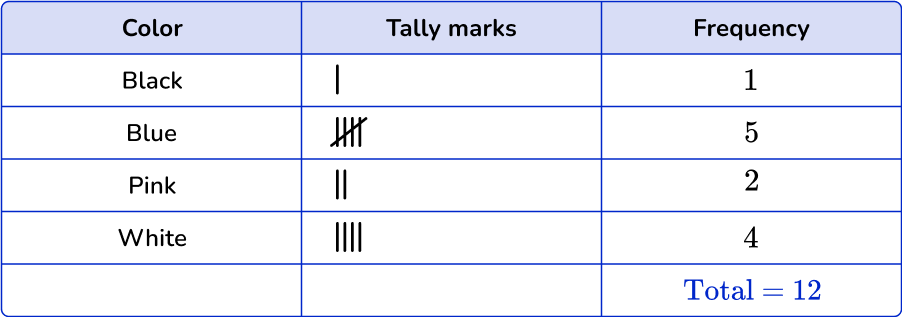
The total number of shirts is 12.
This type of frequency table is also known as an ungrouped frequency table because it displays the frequency of each individual data point, rather than groups of data points.
You use frequency tables to find descriptive statistics. These are values which help describe the set of data such as the mean, median and mode of a set of data.
A frequency table showing the ages of 25 students on a college course.
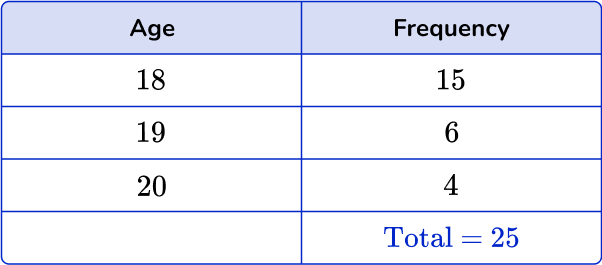
The mode is 18.
The median is the 13^ value which is 18.
The mean can be calculated using the total of all the values, divided by the total of the frequencies, n.
Step by step guide: Mean from a frequency table
Numerical data can also be organized into grouped data. Here, the data is put into different classes with class intervals.
A grouped frequency table showing the heights of 15 students.
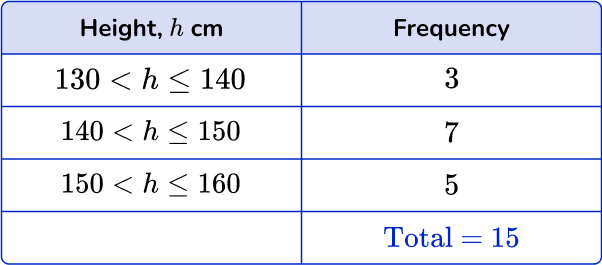
The modal class is 140 < h \leq 150
The median is the 8^ value which is in the 140 < h \leq 150 class interval.
You can only calculate an estimate for the mean using the midpoints of the class intervals. The total of the frequencies is n.
Step by step guide: Modal class
Step by step guide: Grouped frequency table
Frequency tables can be used to draw different types of graphs, including line plots, bar graphs (bar charts), pie charts or histograms. They can also be used to find cumulative frequency, which in turn can be used to estimate median values and upper and lower quartiles for grouped data.
You can take this frequency table,
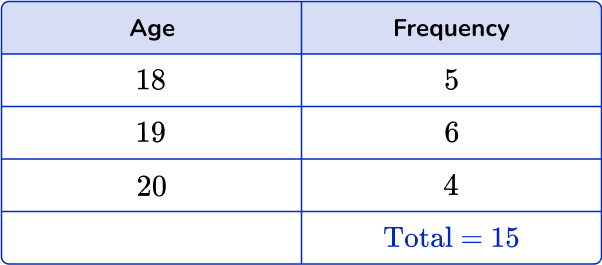
And use the data to create the following dot-plot,
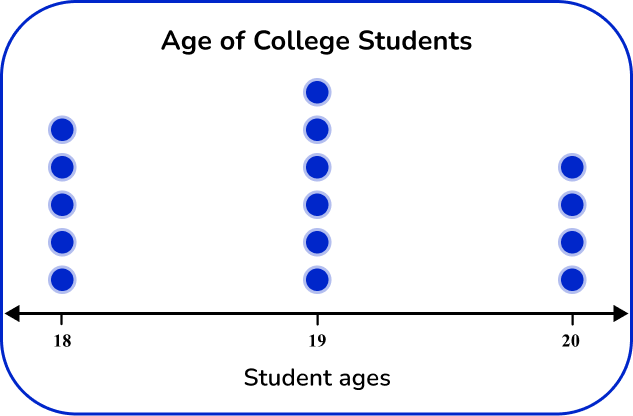
![[FREE] Frequency Table Worksheet (Grade 1 to 8)](https://thirdspacelearning.com/wp-content/uploads/2024/06/Frequency-table-Worksheet-listing-image.png)
![[FREE] Frequency Table Worksheet (Grade 1 to 8)](https://thirdspacelearning.com/wp-content/uploads/2024/06/Frequency-table-Worksheet-listing-image.png)
Use this worksheet to check your grade 1 to 8 students’ understanding of frequency table. 15 questions with answers to identify areas of strength and support!
![[FREE] Frequency Table Worksheet (Grade 1 to 8)](https://thirdspacelearning.com/wp-content/uploads/2024/06/Frequency-table-Worksheet-listing-image.png)
![[FREE] Frequency Table Worksheet (Grade 1 to 8)](https://thirdspacelearning.com/wp-content/uploads/2024/06/Frequency-table-Worksheet-listing-image.png)
Use this worksheet to check your grade 1 to 8 students’ understanding of frequency table. 15 questions with answers to identify areas of strength and support!
Cumulative and relative frequency tables are typically covered in 7 th and 8 th grade and will not be covered in the examples and practice problems on this webpage.
Cumulative frequency tables are frequency tables that show the cumulative frequency distribution. The cumulative frequency distribution is shown in an additional column that shows a cumulative count of all frequencies within a data set.
Using this frequency table, you can calculate the cumulative frequency distribution.
To find the cumulative frequency,

The final cumulative frequency is 15.
Relative frequency tables are a way to show the frequencies within a data set as a proportion or percentage of the total number of observations.
100 students were asked which of the following colors were their favorite and were recorded on a frequency table.
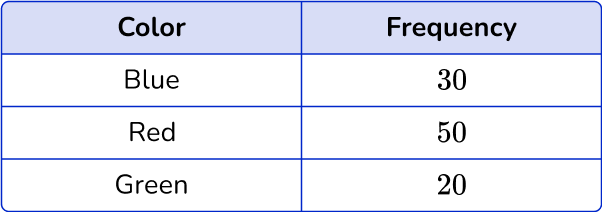
To find the relative frequency distribution, you will divide the frequency by the total number of data points collected.